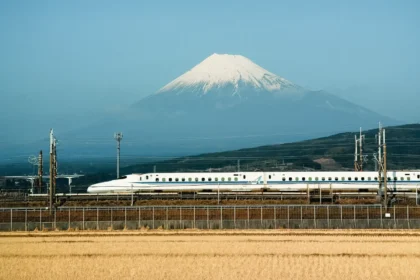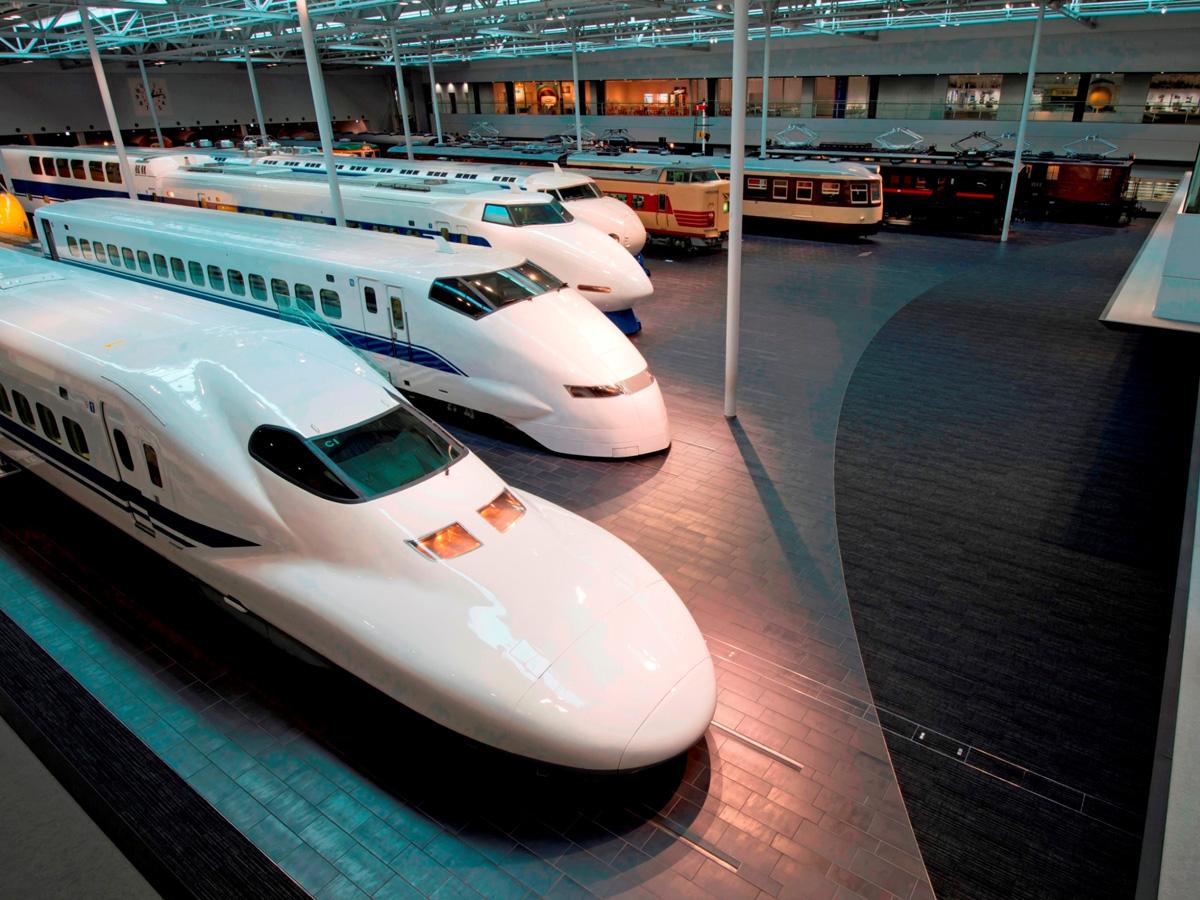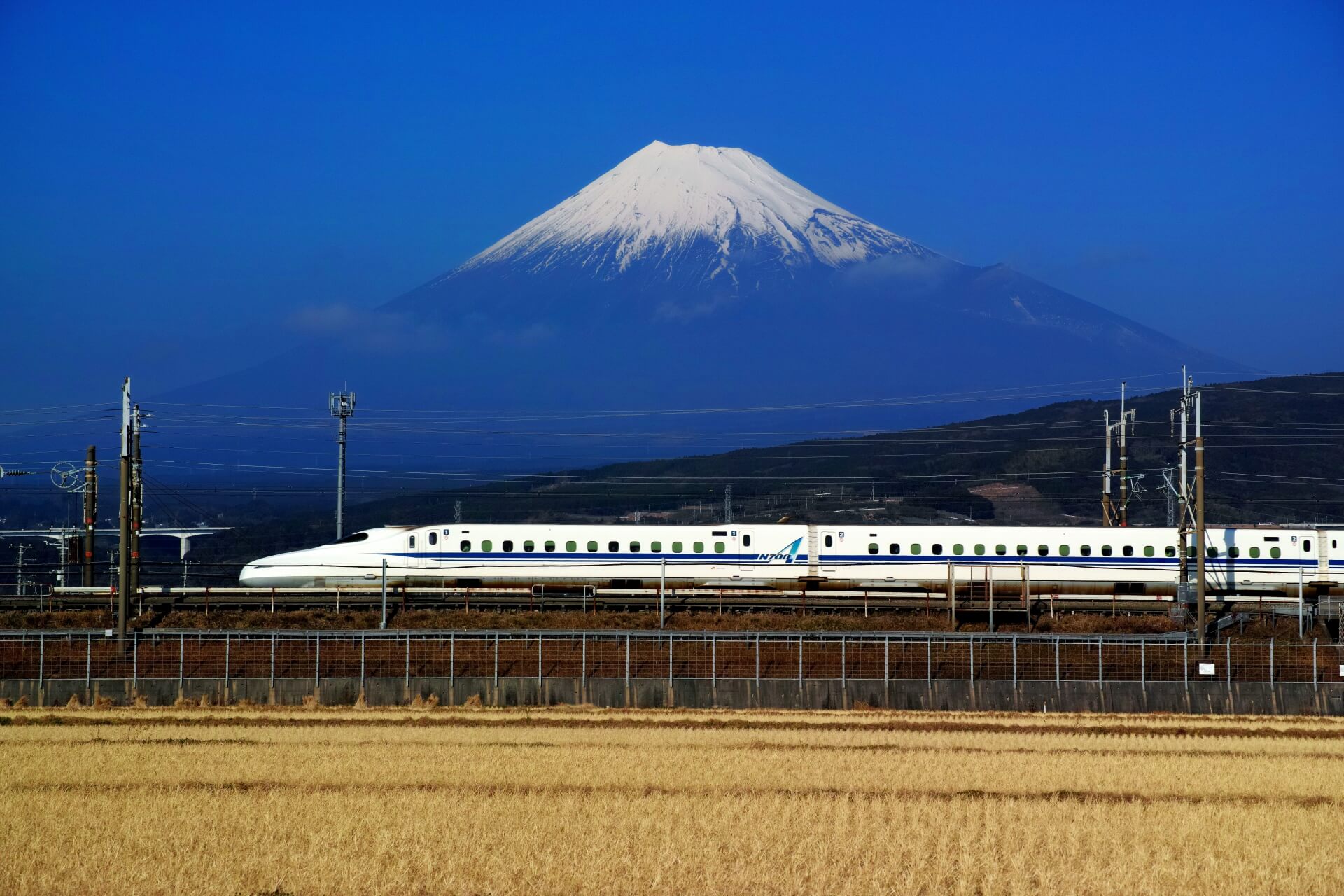
The Japanese rail network is known for its speed, comfort, reliability and above all else, the iconic "Shinkansen" or "Bullet Train" network. However, navigating the elaborate train network can often seem like a daunting task, especially to first time visitors.
This guide includes a breakdown of the types of carriages and seating options on a shinkansen, as well as an explanation of how to book shinkansen tickets and navigating stations and platforms.
TYPES OF CARRIAGES & SEATING ON A BULLET TRAIN
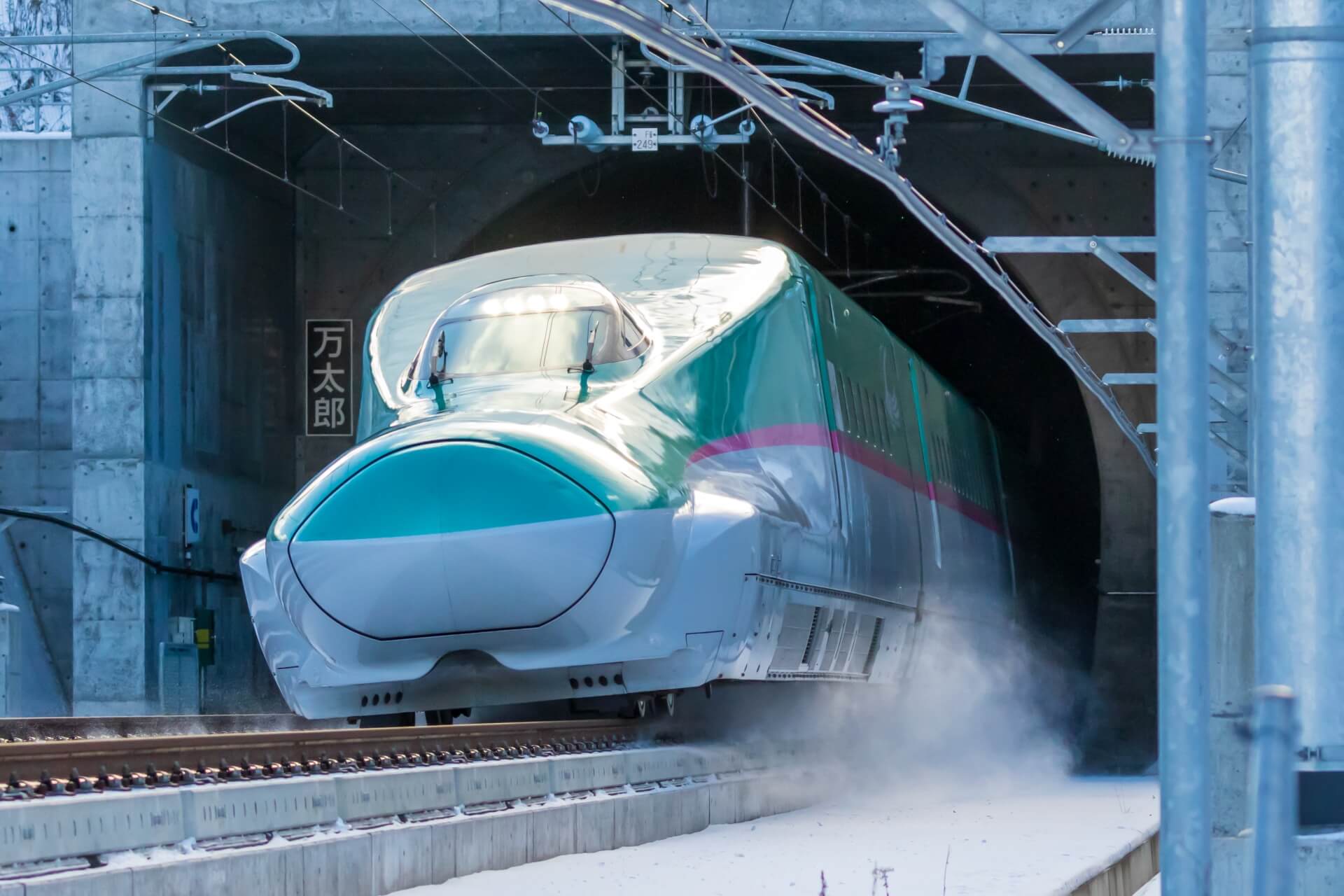
Just like ordinary train lines, some shinkansen services go faster than others and vary in the number of stops they include—from only a couple to all stations along the line. There is also some variation in the types and layout of carriages between the lines however they generally include the following cars: Ordinary, Green, and Gran Class.
Ordinary Car
Most carriages on any shinkansen service will be comprised of ordinary cars including reserved and non-reserved seating. This is the equivalent of economy class on an airline (but with more space and comfort).
Ordinary cars typically have 5 seats per row separated by an aisle, with 3 seats on one side and 2 seats on the other. Seats are comfortable and recline with reasonable legroom available. Each seat has a tray table which folds down from the seat in front and power access for charging electronic devices. Overhead storage is available above each seat however it is worth noting that larger luggage can be difficult to store.
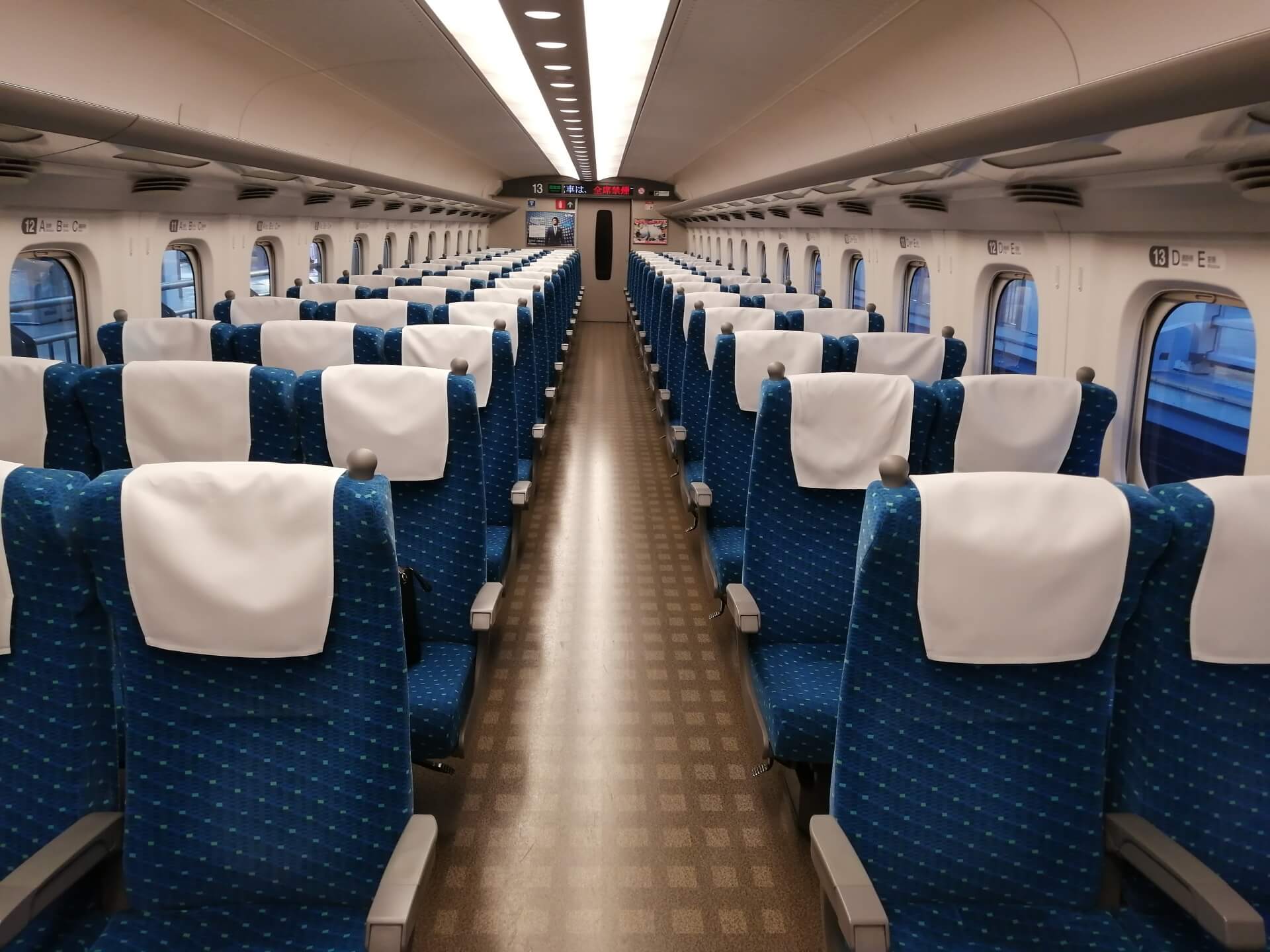
On a shinkansen, reserved and non-reserved seats share the same layout with no difference in comfort. The only difference being whether or not you are guaranteed a particular seat. Visitors traveling in large groups are recommended to purchase reserved seats to ensure they are seated together.
Toilets are available in the area between every second carriage. On most services, a conductor/ticket inspector will move up and down the train and can be approached for assistance. On some lines, a service attendant moves up and down the train with a trolley of food, snacks, and drinks for purchase. If the train is particularly busy it might be difficult for the attendant to make their way along the train, so we recommend grabbing them while you have the chance.
Green Car
Most shinkansen services will have one Green Car, identified by a green four-leaf clover symbol. These cars are reservation only and slightly more expensive than seating in an ordinary car—the equivalent of business class on an airline. Seats are more spacious and comfortable with more legroom. There are only 4 seats per row, divided by an aisle with 2 seats each side. More generous spacing also allows more room for luggage.
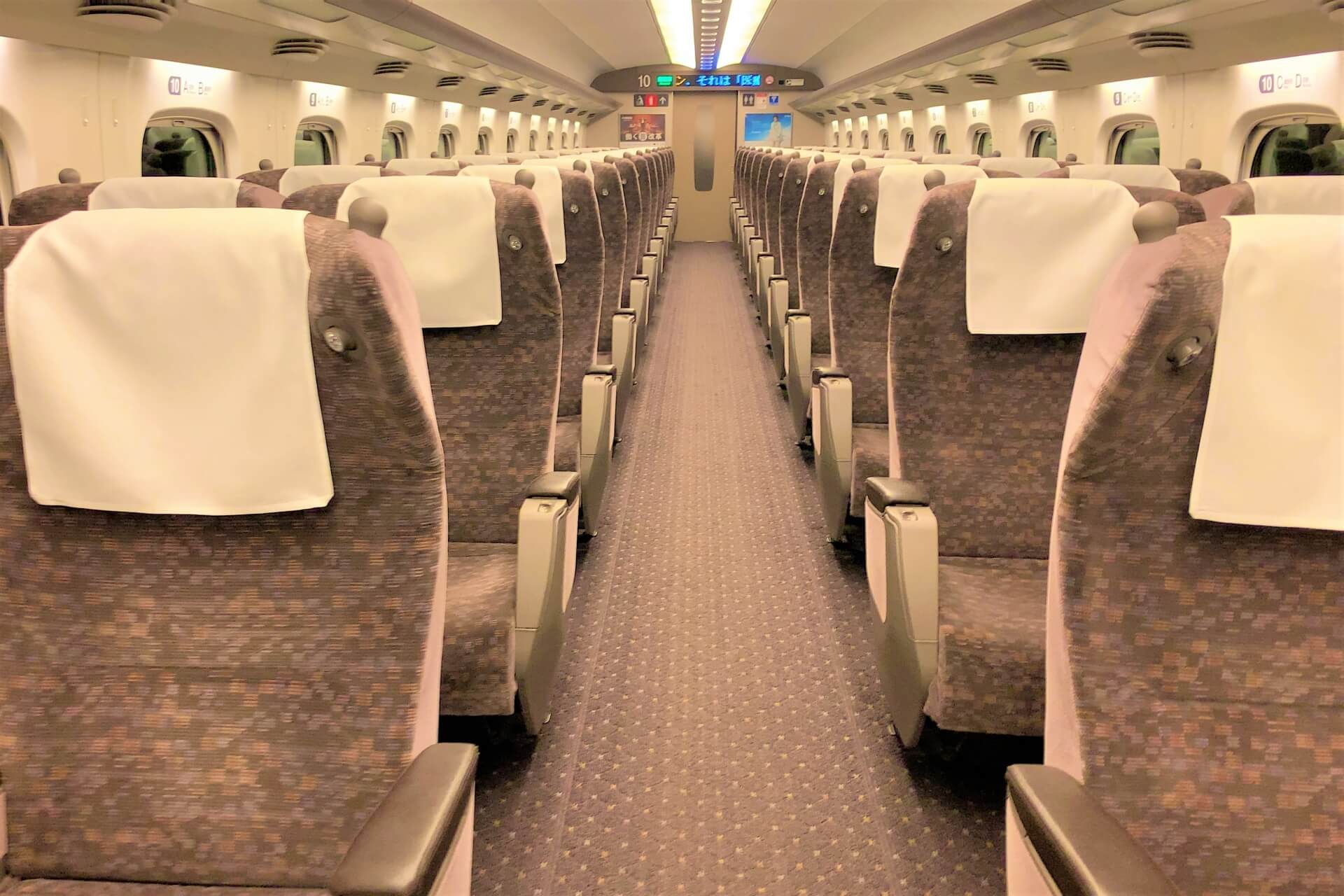
Features including a reading lamp and footrest make the Green Car extra comfortable. Popular with business travelers, these carriages are typically quiet. For the relatively small price difference, Green Car is a good option for travelers who want that extra bit of comfort and quiet.
Gran Class
Some but not all shinkansen services also include "Gran Class." With only one carriage on most services, Gran Class is the equivalent of first class on an airline. Each carriage includes 18 seats, separated by an aisle with 1 or 2 seats either side.
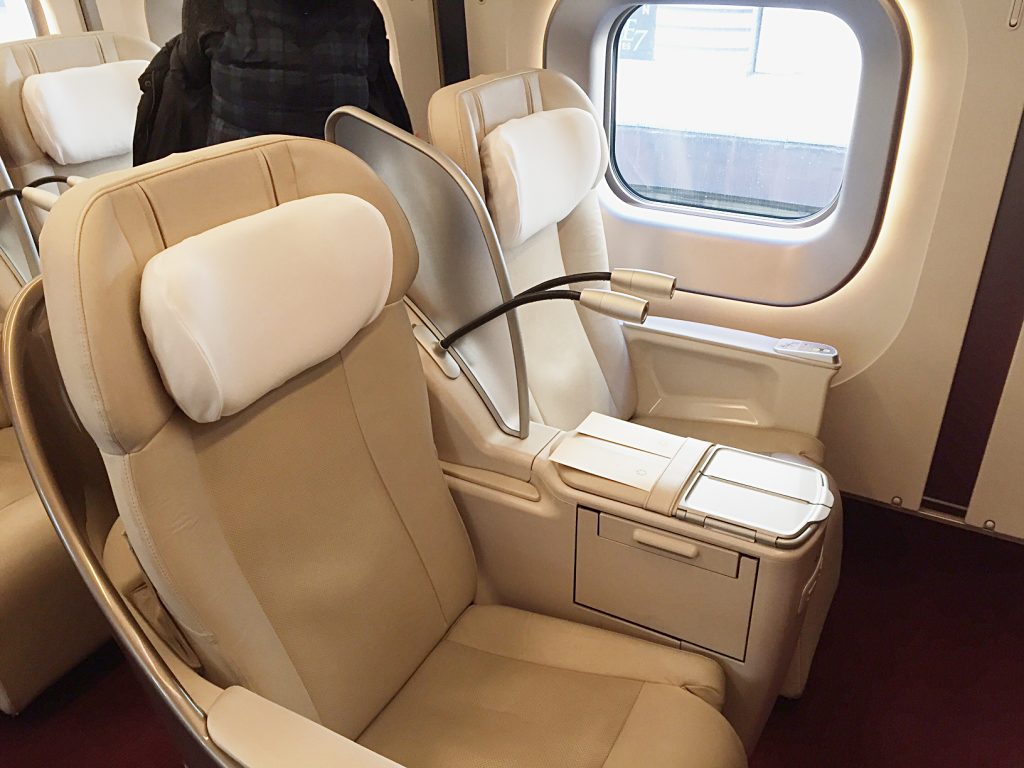
Leather, fully-automated reclining seats offer travelers real comfort with a dedicated Gran Class attendant on-hand to serve complimentary meals, drinks, newspapers, magazines and other items. Gran Class is notably more expensive.
Non-reserved vs Reserved Seating
Almost all shinkansen services offer both non-reserved and reserved seating carriages—there are a couple of exceptions, for example, Kagayaki services on the Hokuriku Shinkansen line only offer reserved seating.
In terms of layout and amenities in the carriages, there is no difference between reserved or non-reserved cars. If you are holding a non-reserved ticket, you can board any non-reserved carriage and take any available seat. Whereas a reserved ticket allocates you a specific carriage and seat number on a specific service. Either type of ticket can be purchased online, at the ticket office and ticket machines and there is often only a small difference of price—depending on the distance you are traveling.
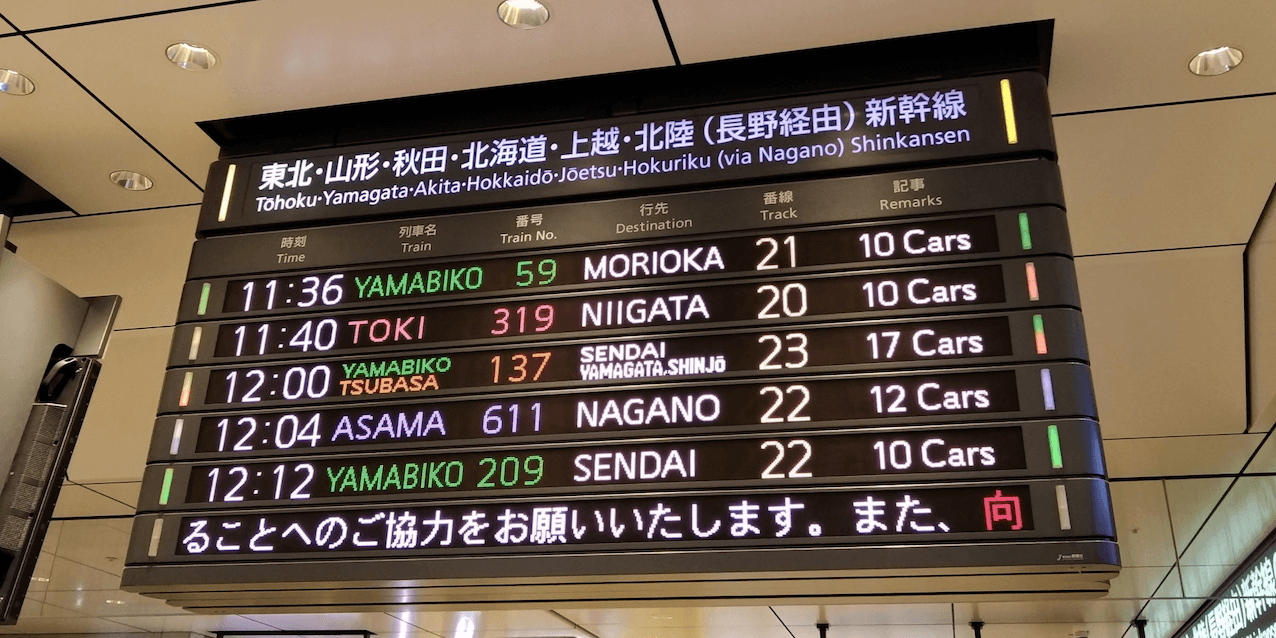
Whether it is worth booking a reserved seat depends on your circumstances. If you are traveling by yourself, then outside absolute peak periods such as public holidays including around Golden Week in late-April/early-May, Obon in August and New Years, and perhaps some services either side of the weekend i.e. Friday and Sunday evening, there probably isn’t much need to reserve a seat. You should be able to find one easily.
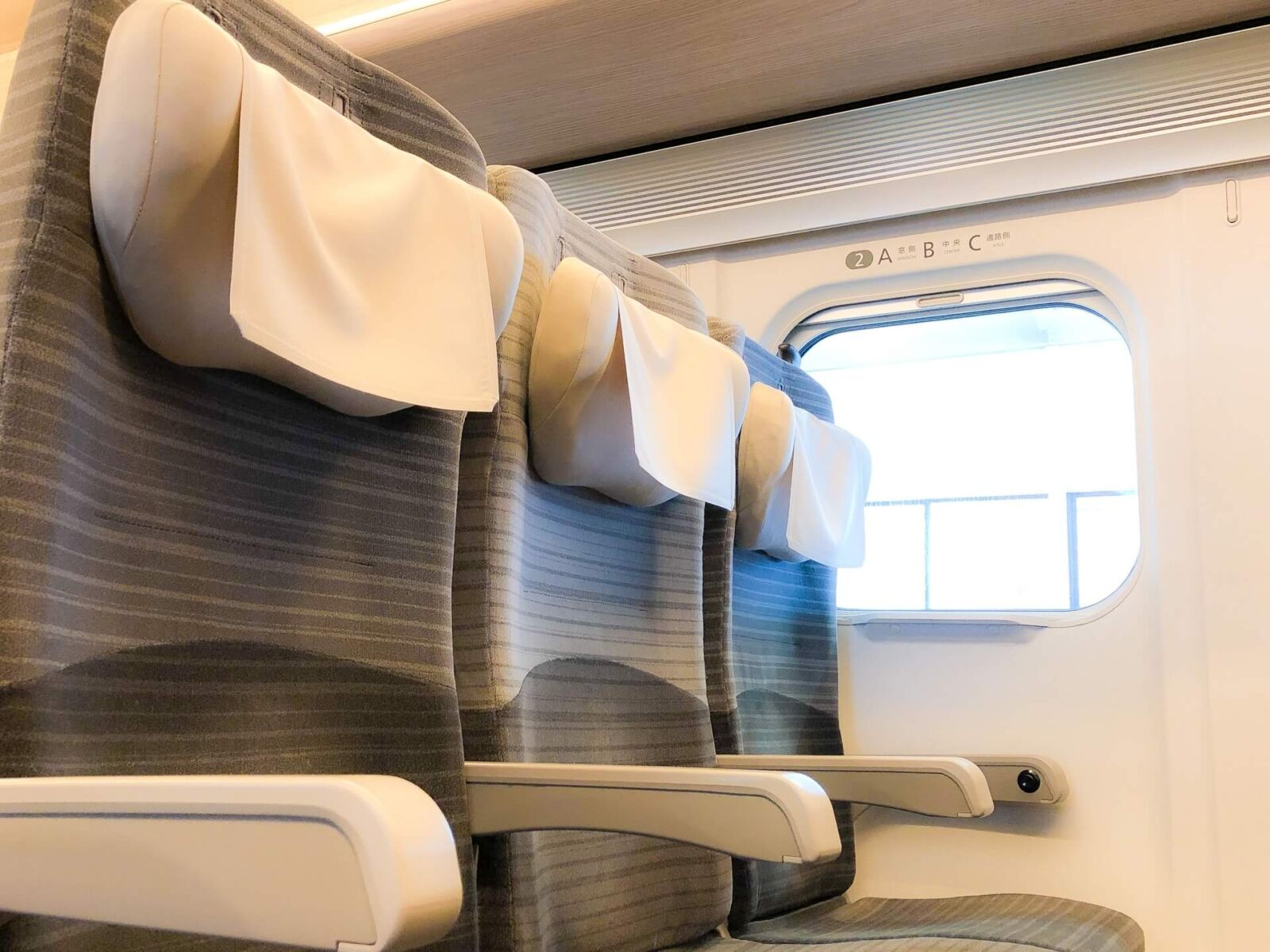
If you are traveling as a couple, you should also be ok but of course will have more trouble finding seats together during peak times. Anyone traveling as a group of 3 or more, including families with children, that want to sit together should reserve your seats. Even when the service is quiet it might be hard to find three or more seats together, so booking in advance is a good idea.
Travel tip: it isn’t unusual to see reserved carriages more full non-reserved given the tendency of many people to book in advance. During the day, non-reserved carriages can be very quiet and you shouldn’t have a problem finding a seat. And keep in mind that even if you have a reserved ticket, you can still sit in a non-reserved carriage – a good option if you find the reserved carriage much more busy than non-reserved.
HOW TO BOOK A SHINKANSEN IN JAPAN: TICKETING, IC CARDS & JAPAN RAIL (JR) PASSES
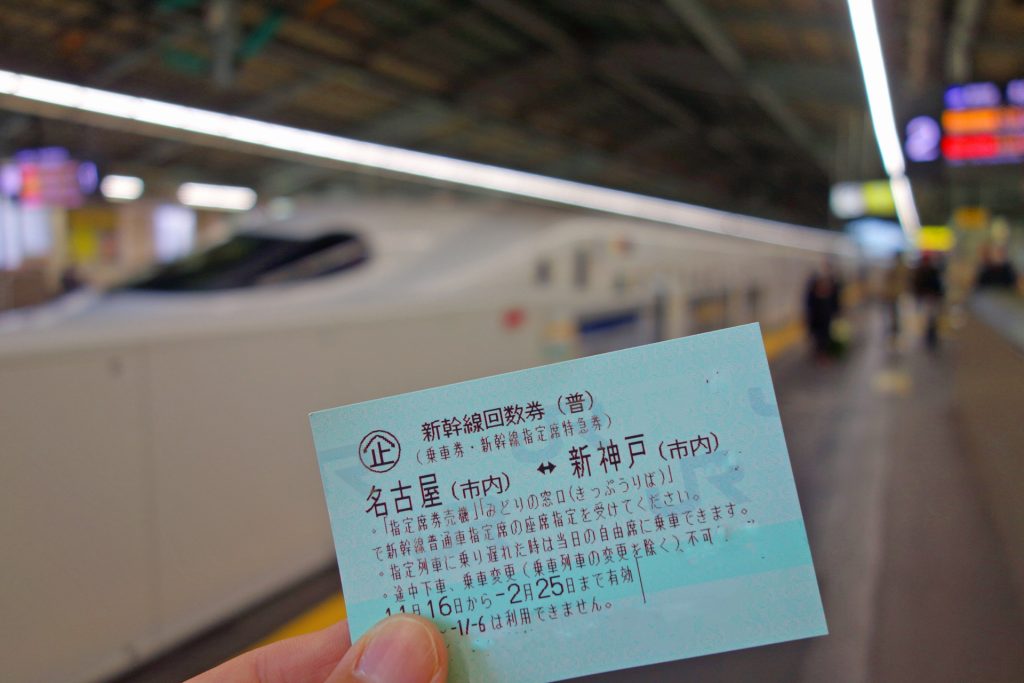
Some IC cards, such as Suica or Icoca, can be used on select shinkansen lines. However, they require advanced set-up and to be linked to a credit card. Therefore, it is typically recommended that travelers utilize paper tickets or JR passes for their shinkansen travels.
Purchasing a shinkansen ticket can be done via ticket machines or at the ticket office at shinkansen stations. The shinkansen ticket machines are clearly marked and the display can be switched to English or other foreign languages.
The process includes selecting your intended date of travel, number of passengers, your departure and arrival stations, car type (i.e. ordinary, green car, etc.), and preference for a non-reserved or reserved ticket. If you have any concerns, just head into the ticket office and station staff can assist you in the process.
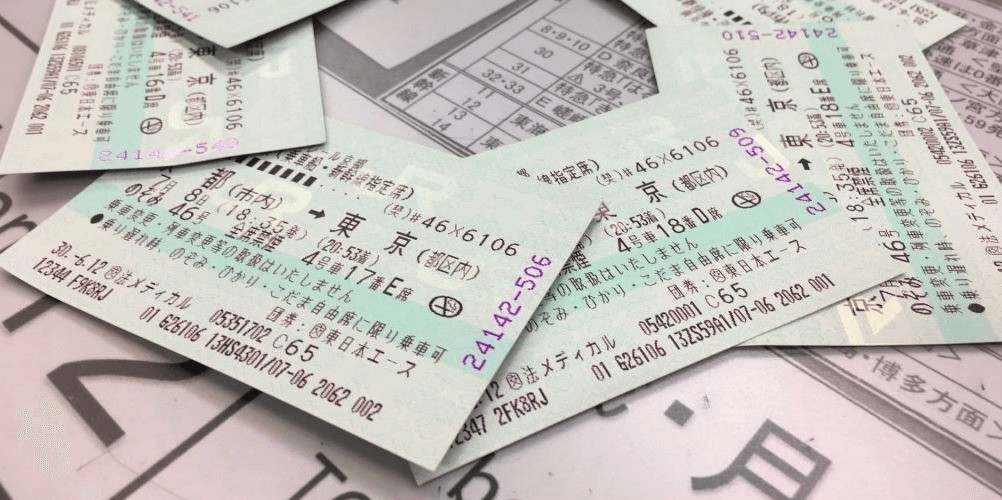
Japan Rail (JR) Passes
International visitors have access to passes that cover almost all services on the JR network, including shinkansen services, that can be purchased prior to your arrival or once in Japan.
Each operator also provides a local pass covering just it’s region i.e. JR East, JR Central etc. which offer excellent value if you are spending the majority of your time in one region. However, for most travelers the full pass is the most popular option:
Traditional Japan Rail (JR) Pass: typically referred to as the ‘JR Pass’, the full Japan Rail (JR) Pass is available for 7, 14 and 21-day periods and cover unlimited (with a couple of exceptions) use of the shinkansen network and many other trains around Japan. These passes represent the most economical and convenient way of navigating the rail network and in doing so, get the most out of your time in Japan. Passes can be purchased online before you leave your home country, through approved overseas agents or once you arrive a major ticket offices.
Regional JR Passes: each operator on the JR network offers a local/regional pass. For example, JR East offers a pass covering just Nagano and Niigata including the Hokuriku and Joetsu shinkansen lines. These passes are notably cheaper than the full pass and my suit some itineraries better. Passes and offers are updated regularly so it’s best to use the links above – under ‘Overview of Japan’s Rail Network’ – to access each operators website and check what’s on offer.
Please note, when purchasing your pass outside of Japan, once you arrive you will need to exchange your receipt of purchase and activate your pass before you can use. Information of how to do so is included on the pages for each pass.
NAVIGATING SHINKANSEN STATIONS & PLATFORMS
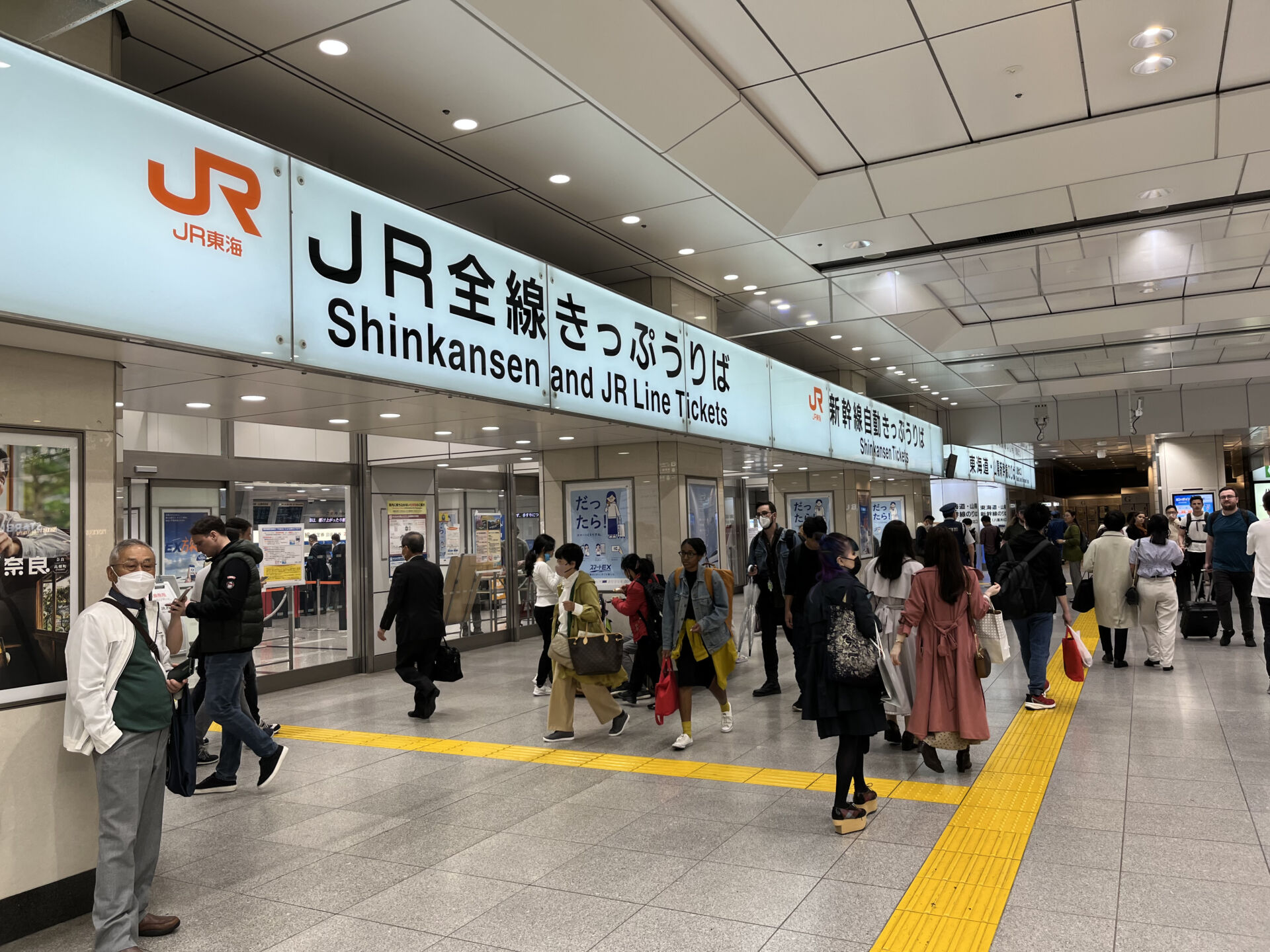
Some stations in Japan are huge, so it pays to keep track of which entrance or exit your used—this is especially true of stations such at Shinjuku, Tokyo, Nagoya, and Shin-Osaka stations that have expansive networks of walkways, shops and restaurants. Additionally, many shinkansen stations are likely to be split over multiple levels with specific lines and services only accessible from specific areas. Thankfully, we have guides to many of the larger stations including the aforementioned Shinjuku, Tokyo, Nagoya, and Shin-Osaka stations. These stations will also have tourist information offices and numerous station attendants which can help direct you to the shinkansen gates or other services.
Once you locate the shinkansen ticket gates, you will need to enter your paper ticket into the slot and make sure to collect it on the other side. If you are using a JR Pass, show it to the station attendant at the window and they will waive you through. If you have a paper ticket and try to enter the incorrect gate, the ticket will not be accepted and will come back to you. However, when using an IC Card or JR Pass the system or station attendant doesn’t know where you are headed so it’s easier to enter the wrong zone by accident—so it's best to double check the train line before passing though the ticket gate.
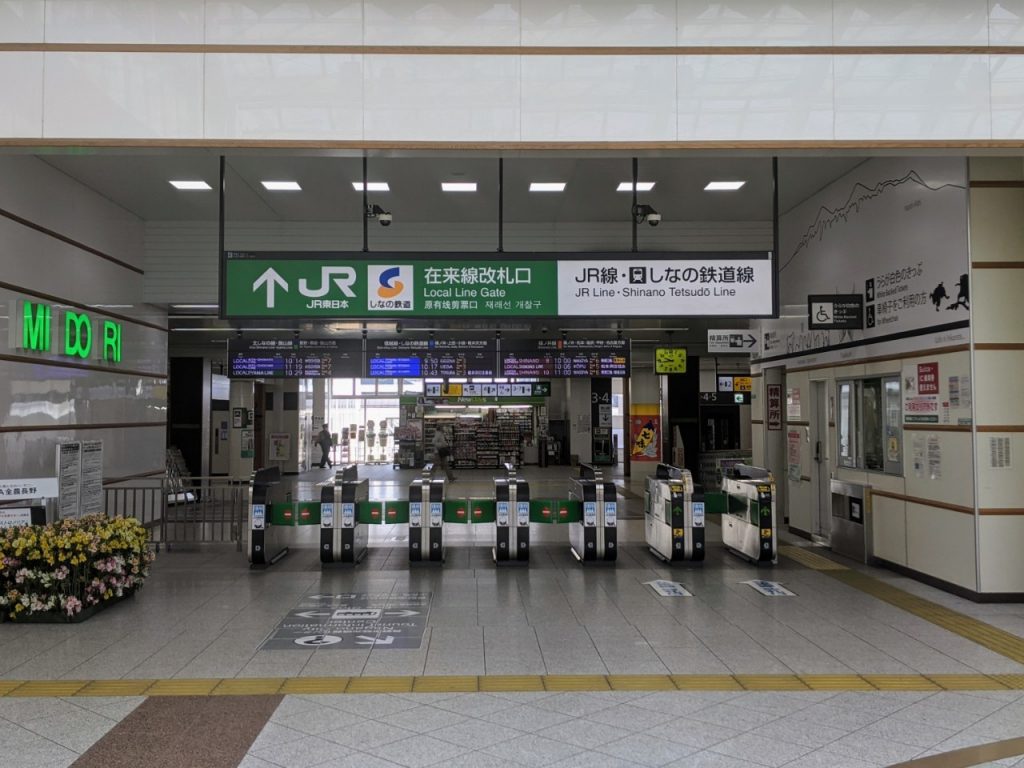
Once inside the paid-zone, you will see the board listing arrivals and departures. This typically alternates between Japanese and English making it easy to understand and listing the platform. From there, escalators and elevators leading to each platform should be clearly marked and easy to find.
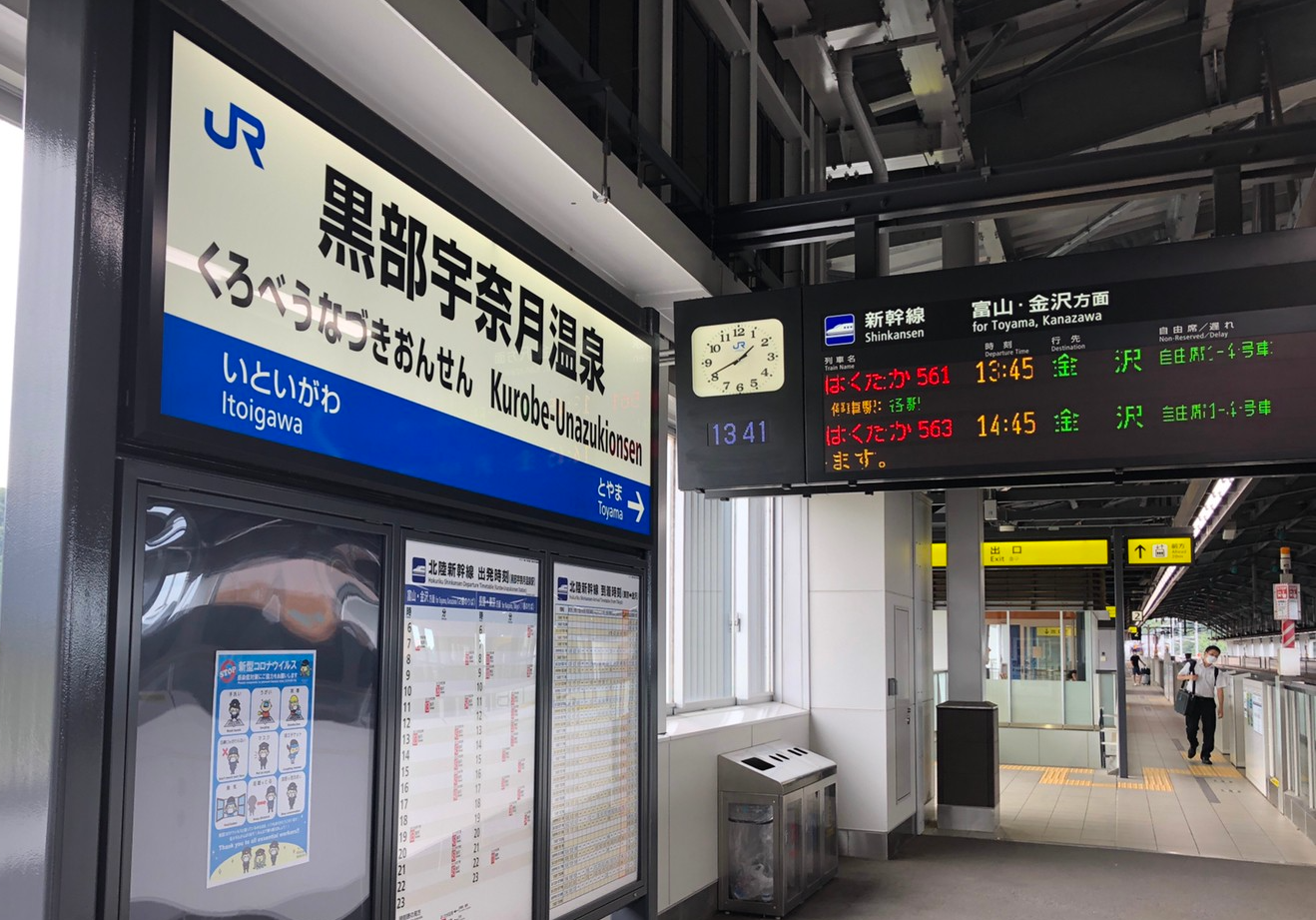
Once on the platform, you should again see alternating displays in Japanese and English. Many stations do not have barriers separating the platform from the track and platforms can be crowded, so please be mindful of people around you. Highly-visible yellow paving marks the line behind which you are asked to stand for your safety while markings on the platform often show where the doors will be when the train stops.
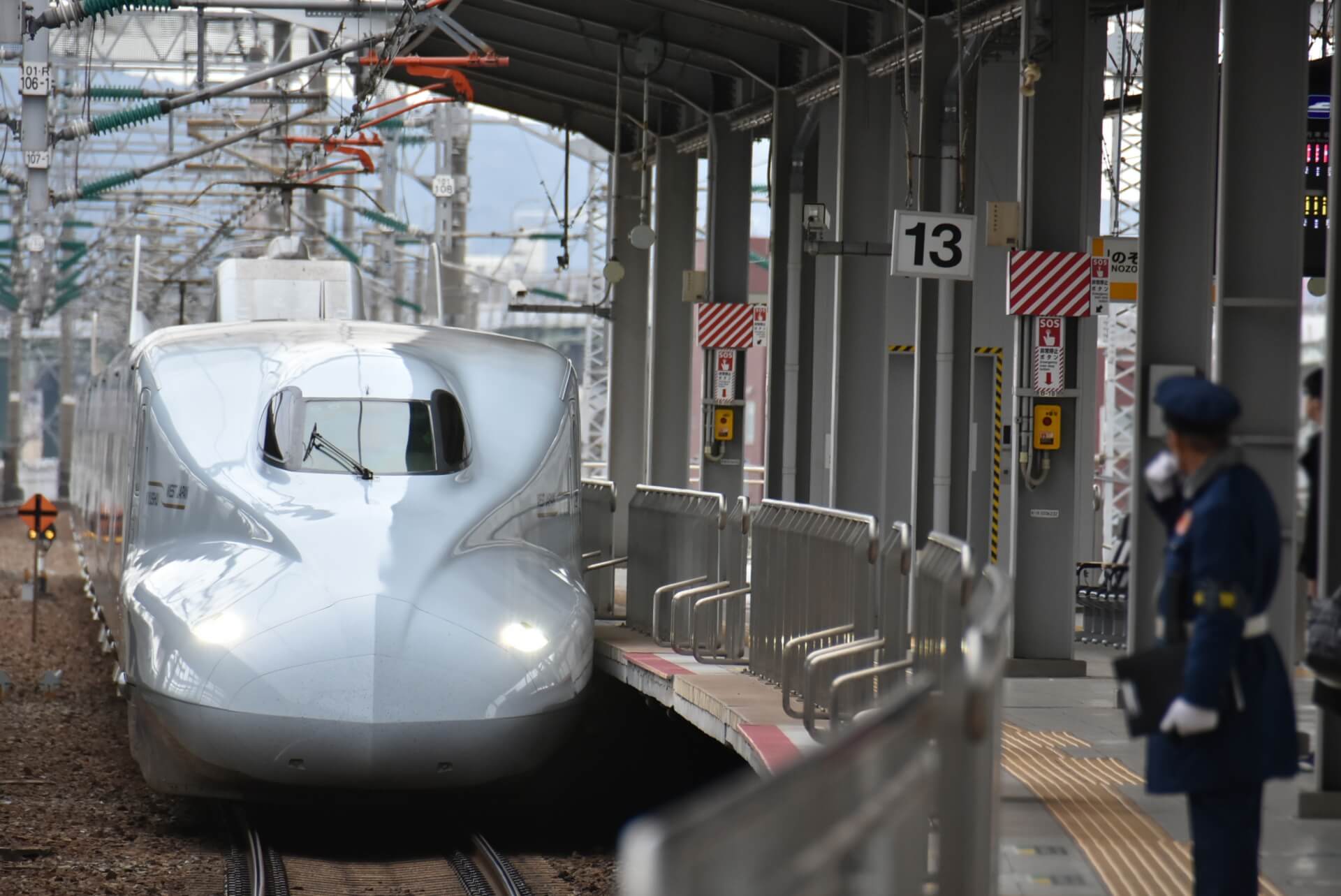
For shinkansen and other rapid services, the markings on the platform will usually also indicate the position of each numbered carriage, allowing you to line-up in the correct spot if you have a reserved ticket. If you get this wrong, no need to worry. Just board the train on any carriage and walk through to your specified carriage/seat. Passengers are expected to allow departing passengers to disembark before they board.
Once you've boarded your train and found your seat, you can sit back, relax, and enjoy the scenery passing by as you will arrive at your destination in the blink of an eye.
Love Shinkansen? You will likely enjoy this museum in Nagoya dedicated to the history and science of train travel in Japan.














